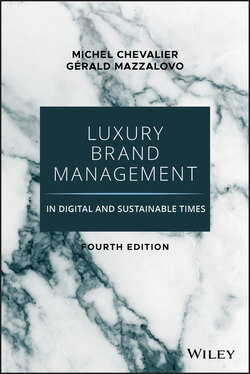Читать книгу Luxury Brand Management in Digital and Sustainable Times - Michel Chevalier - Страница 42
Sales Figures Are Difficult to Compare
ОглавлениеIn the luxury industry, comparing levels of sales across companies can be like trying to compare apples with oranges, as corporate figures may comprise very different elements. If we take the sales figures for Louis Vuitton, things are relatively simple because they include sales in the group's 450 stores worldwide. But Carven's sales figures, for example, reflect retail sales at its stores, ready-to-wear sales at wholesale outlets and department stores, export sales, and revenues from licenses given to outside enterprises. As a rule of thumb, wholesale sales are approximately half of retail sales, export sales are generally 20% of retail sales, and license royalties amount in general to 10% of billings, which can in turn come from retail, wholesale, and export sales. Thus, it just doesn't make sense to compare the two companies in terms of their sales figures.
To compare the power of two brands, one would have to multiply part of the activity by a coefficient to account for differences in export sales and wholesale sales, for example, so that everything would be computed as a final retail sales amount. But this would still be misleading, because a brand developing essentially through license agreements will be weaker than a brand that controls 100% of its activities at retail. Also, in most cases, the split between retail, wholesale, export, and license royalties isn't given, so assumptions are difficult to make.
The fact that some brands are developed through licenses, with sometimes, for example in the case of perfumes, royalties from these accounting for only 3–4% of their sales, explains why luxury businesses are sometimes very small, even when the brand has a strong presence worldwide in various stores. However, a brand such as Hermès, which (except for its perfumes) sells almost exclusively in its own stores, can still have annual sales of €6.8 billion in 2019. It may not be as big as Peugeot or Renault, but for a luxury company, it is quite impressive.
The mix of activities makes it difficult to understand exactly what is meant when executives of luxury companies declare sales targets of, say, €100 million in China or Japan. Are they referring to total sales, as will be reported in their consolidated financial statements, or do they mean retail volume, which may earn them only €3–5 million in license royalties? There is a significant difference.
As a rule, these sorts of statements should be considered carefully, given that, as we have seen, comparing businesses in financial terms can be quite difficult.
